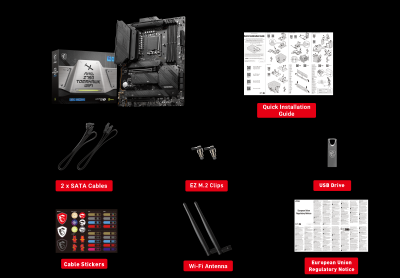Receiving feedback is crucial for photographers aiming to enhance their skills and portfolios. iStock‘s Feedback System offers valuable insights into your work, allowing you to understand what resonates with buyers and what could be improved. Here’s how to effectively leverage this system to elevate your photography.
Understanding the Importance of Feedback in Photography
Feedback plays a vital role in the growth of any photographer. It serves as an external perspective on your work, helping you identify both strengths and areas for improvement. Constructive criticism can guide you in refining your techniques, improving your composition, and honing your artistic vision. Moreover, understanding what buyers look for ensures your photos are market-ready.
In the competitive landscape of stock photography, it’s not enough to simply take good photos. You must also adapt and evolve based on insights from viewers and professionals. Feedback helps you stay aligned with current trends and client expectations. By integrating these insights into your practice, you not only enhance your skills but also increase the likelihood of your images being selected by clients, ultimately driving sales and success.
Overview of iStock’s Feedback System
iStock‘s Feedback System is designed to evaluate your submitted images based on several criteria, including quality, composition, and marketability. Here’s how it typically works:
- Reviewer Insights: Experts provide detailed comments on your submissions, pointing out what works and what doesn’t.
- Scoring System: Each photo is given a score that reflects its potential appeal to buyers, helping you prioritize which images to improve or promote.
- Trends Analysis: iStock often shares feedback trends, allowing you to gauge what types of images are gaining popularity in the market.
- Learning Resources: The platform may recommend tutorials or articles based on your feedback, guiding your development journey.
By utilizing these features, photographers can strategically enhance their portfolios and increase their chances of success on iStock.
How to Access the Feedback System on iStock
Accessing the feedback system on iStock is a straightforward process that can greatly enhance your photography journey. Here’s how you can do it:
- Log In to Your Account: First things first, head over to the iStock website and log into your contributor account. If you haven’t created an account yet, you’ll need to sign up and start your journey!
- Navigate to Your Portfolios: Once you’re logged in, click on your profile icon at the top right corner of the page. From the dropdown menu, select “My Account” and then head to “Portfolios.”
- View Your Images: In the Portfolios section, you’ll see all the images you have uploaded. Click on any specific photo you want feedback on.
- Check for Feedback: Below your image, there should be a section dedicated to feedback. This is where buyers and reviewers leave comments, ratings, or suggestions related to your work.
- Evaluate Overall Trends: Don’t just focus on individual feedback. Look for trends in the comments and ratings across multiple images to get a comprehensive understanding of what buyers are looking for.
Remember, consistent engagement with feedback is essential. Make it a habit to check regularly; this will keep you attuned to buyer preferences and improve your photographic skills significantly.
Interpreting Feedback from Buyers and Reviewers
Understanding feedback from buyers and reviewers can feel a bit like deciphering a code at first, but once you get the hang of it, you’ll be able to extract valuable insights. Here’s how you can interpret the feedback effectively:
- Positive Feedback: If you notice buyers are frequently praising your images, take note! What aspects are they highlighting? Was it the composition, lighting, or the subject matter? Use this as a foundation for future projects.
- Constructive Criticism: Be on the lookout for suggestions on areas for improvement. For instance, if multiple reviewers mention that a photo lacks sharpness, this indicates a technical adjustment is needed.
- Common Themes: Compile feedback over time to identify recurring themes. Are there certain styles or subjects that attract more attention? This can give you clues about what might sell better.
- Request Clarification: Don’t hesitate to reach out to buyers or fellow photographers for further clarification if feedback is unclear. Most people are happy to elaborate on their opinions!
Interpreting feedback isn’t just about accepting criticism; it’s about fostering growth. Embrace the insights you gain as they will undoubtedly guide you toward creating more appealing and marketable photographs.
Implementing Suggestions to Enhance Your Photography Skills
Once you’ve received feedback from the iStock system, the next step is to implement those suggestions to take your photography to the next level. Here’s how to translate constructive criticism into actionable steps:
- Evaluate the Feedback: Start by categorizing the feedback you received. Are there recurring comments about lighting, composition, or subject matter? Identifying patterns will help you focus on what really needs improvement.
- Prioritize Changes: Not every piece of feedback will be equally important. Choose the suggestions that resonate most with your style and the goals you have for your photography. For instance, if multiple reviewers mention that your photos seem too dark, prioritize learning about lighting techniques.
- Practice, Practice, Practice: The best way to implement feedback is through practice. If you need to improve your composition, take your camera out and experiment with different angles and perspectives. Consider setting up specific photo challenges for yourself based on the feedback.
- Seek Additional Resources: There are countless tutorials, books, and courses available that can help you address specific areas of improvement. Whether it’s mastering the art of portrait photography or learning about post-processing, investing time in education will pay off.
- Get More Feedback: After making adjustments, don’t hesitate to seek further feedback. Submit your revised photos to the iStock system, or ask peers for their impressions. Continuous improvement is key!
By taking these steps, not only will you enhance your photography skills, but you’ll also build confidence in your work and ready yourself for future submissions.
Common Feedback Themes and How to Address Them
As you navigate the feedback system on iStock, you might notice common themes emerging from the critiques. Understanding these themes can be incredibly helpful in enhancing your photography. Here are some frequent categories of feedback and tips on how to tackle them:
| Feedback Theme | How to Address It |
|---|---|
| Lighting Issues | Experiment with natural light and different times of day. Consider investing in additional lighting equipment if you’re working indoors or in shadowy conditions. |
| Composition Problems | Learn about the rule of thirds, leading lines, and framing techniques. Regularly review your photos for balance and ensure your subject stands out. |
| Lack of Emotion | Work on capturing candid moments. Practice getting to know your subjects and creating a comfortable atmosphere to elicit genuine emotions. |
| Technical Quality | Invest time in post-processing. Understanding software like Lightroom or Photoshop can significantly improve sharpness, contrast, and color accuracy. |
| Generic Content | Be unique! Focus on niche areas or develop a signature style. Spend time brainstorming concepts that stand apart from what’s currently trending on stock platforms. |
By addressing these common feedback themes head-on, you’ll not only refine your techniques but also create images that resonate more with your audience. Remember, photography is an ever-evolving art form, and every critique is an opportunity for growth!
The Role of Image Keywords and Descriptions in Receiving Feedback
When it comes to getting valuable feedback for your photos, keywords and descriptions are absolutely crucial. These elements serve not just as metadata; they are your first opportunity to connect with your audience—and potential reviewers—on iStock. Here’s why they matter:
- Visibility: Properly chosen keywords help your images appear in search results, increasing the likelihood of receiving comments and critiques.
- Context: Descriptions provide context that might not be apparent just from the image alone, allowing reviewers to understand your intent and style.
- Specific Feedback: If your keywords and descriptions are detailed and relevant, you’ll receive more targeted feedback, making it easier to improve.
For example, imagine you upload a stunning landscape photo but only tag it as “nature.” This is too broad. Instead, consider using specific keywords like “sunset,” “mountains,” and “wildflowers.” This approach not only enhances visibility but also helps reviewers understand the setting and focus of your photo.
Moreover, take the time to write thoughtful descriptions. Describe the story behind the image or the technique used in capturing it. This additional context can elevate the quality of feedback you receive significantly. When reviewers know what you were aiming for, they can give you insights that are much more meaningful.
In essence, don’t underestimate the power of well-crafted keywords and descriptions. They are your allies in the quest for constructive feedback that will help you elevate your photography game.
Real-life Success Stories from Photographers Using iStock Feedback
Success in photography can often feel elusive, but many photographers have found their way with the iStock feedback system! Here are a couple of inspiring real-life stories of how engaging with feedback transformed their portfolios:
- Sarah’s Journey: Sarah, an aspiring wildlife photographer, used iStock to submit her photos of exotic animals. Initially, her images weren’t receiving much attention. After some feedback, she learned that her keywords weren’t specific enough. Post-feedback, she revamped her tags, improving her visibility and, importantly, her sales! Within months, she saw a 300% increase in downloads and received requests for prints based on her new uploads.
- Mike’s Transformation: Mike, a professional portrait photographer, utilized the feedback system to understand how viewers reacted to his work. One commenter suggested he experiment with lighting and composition. Mike took this advice to heart, adjusted his techniques, and within weeks, landed a contract for a local magazine cover, highlighting his ability to adapt and grow based on constructive criticism.
These stories illustrate the real impact feedback can have. By remaining open to critique and willing to make changes, photographers like Sarah and Mike have not only improved their work but also broadened their opportunities. So, don’t hesitate to actively seek out feedback on iStock—who knows what doors it could open for you?
Strategies for Continuous Improvement Based on Feedback
Feedback is one of the most valuable tools for photographers, especially when striving to enhance your work on platforms like iStock. Embracing feedback and integrating it into your practice can lead to meaningful improvements. Here are some strategies you can adopt for continuous growth:
- Analyze Feedback Regularly: Make it a habit to review the feedback on your submissions consistently. Look for patterns or recurring themes in the comments. Are multiple reviewers mentioning similar strengths or weaknesses? Acknowledging these will help you pinpoint areas for improvement.
- Prioritize Constructive Criticism: While positive feedback is affirming, constructive criticism is where the real growth happens. Focus on those points that challenge you or highlight flaws in your work. Taking these seriously can lead to significant advancements in your photography skills.
- Set Specific Goals: Once you’ve identified areas needing attention, set clear, achievable goals. For instance, if feedback indicates that your compositions are often cluttered, aim to practice minimalist photography. Break down your goals into actionable steps over a set timeframe.
- Experiment and Iterate: Use the feedback to fuel your creativity. Try new techniques or styles based on suggestions. Don’t hesitate to take risks—photography is about exploration. After implementing changes, submit the updated work for review to gauge the effectiveness of your improvements.
- Engage with Others: Connect with fellow photographers within the iStock community. Participate in forums or feedback groups to share your work and receive diverse insights. Sometimes, a fresh perspective is just what you need!
Remember, the goal is to foster a mindset of constant improvement. With each photograph you take and each piece of feedback you receive, you have the opportunity to refine your craft and elevate your portfolio.
Conclusion and Encouragement to Engage with the Feedback System
Using the iStock feedback system can be a game-changer for your photography journey. It’s not just about receiving critiques; it’s about understanding your audience and refining your skills based on what they appreciate. As you wrap up this insight into the feedback process, here are some closing thoughts:
- Embrace Feedback: Be open to receiving both praise and constructive criticism. Each piece of feedback is a stepping stone toward mastering your craft.
- Stay Committed: Improvement doesn’t happen overnight. Stay patient and continue honing your skills, even if progress feels slow at times.
- Iterate Your Work: Don’t hesitate to revisit and adjust your previous photos based on feedback. This not only improves your overall portfolio but also showcases your development as an artist.
- Involve Yourself: Actively participate in iStock’s community. Engaging with others not only enriches your experience but also opens doors for collaborative growth.
Engaging with the feedback system may seem daunting at first, but the potential for personal and professional development is immense. So grab your camera, embrace feedback with an open heart, and watch your photography flourish!



